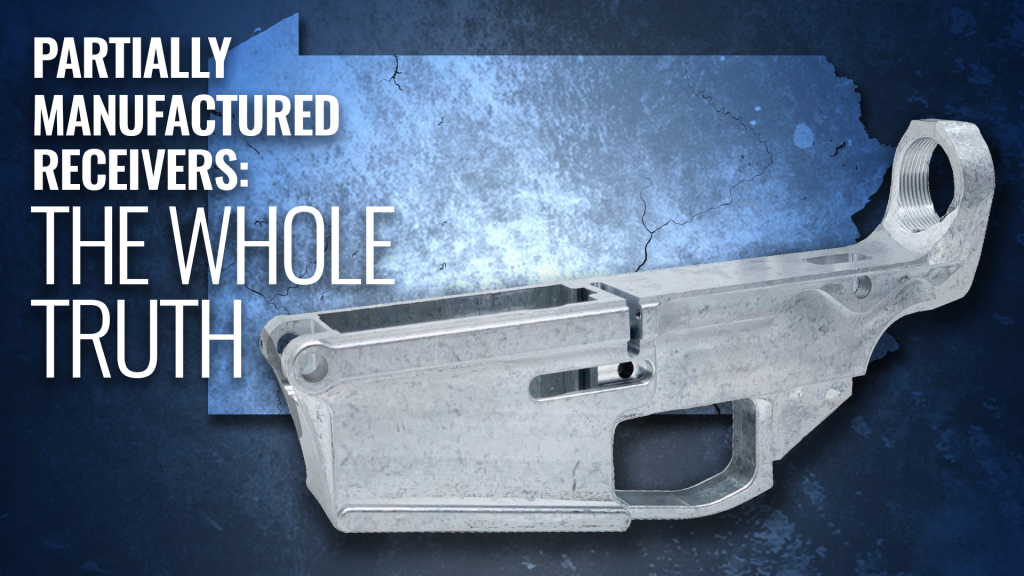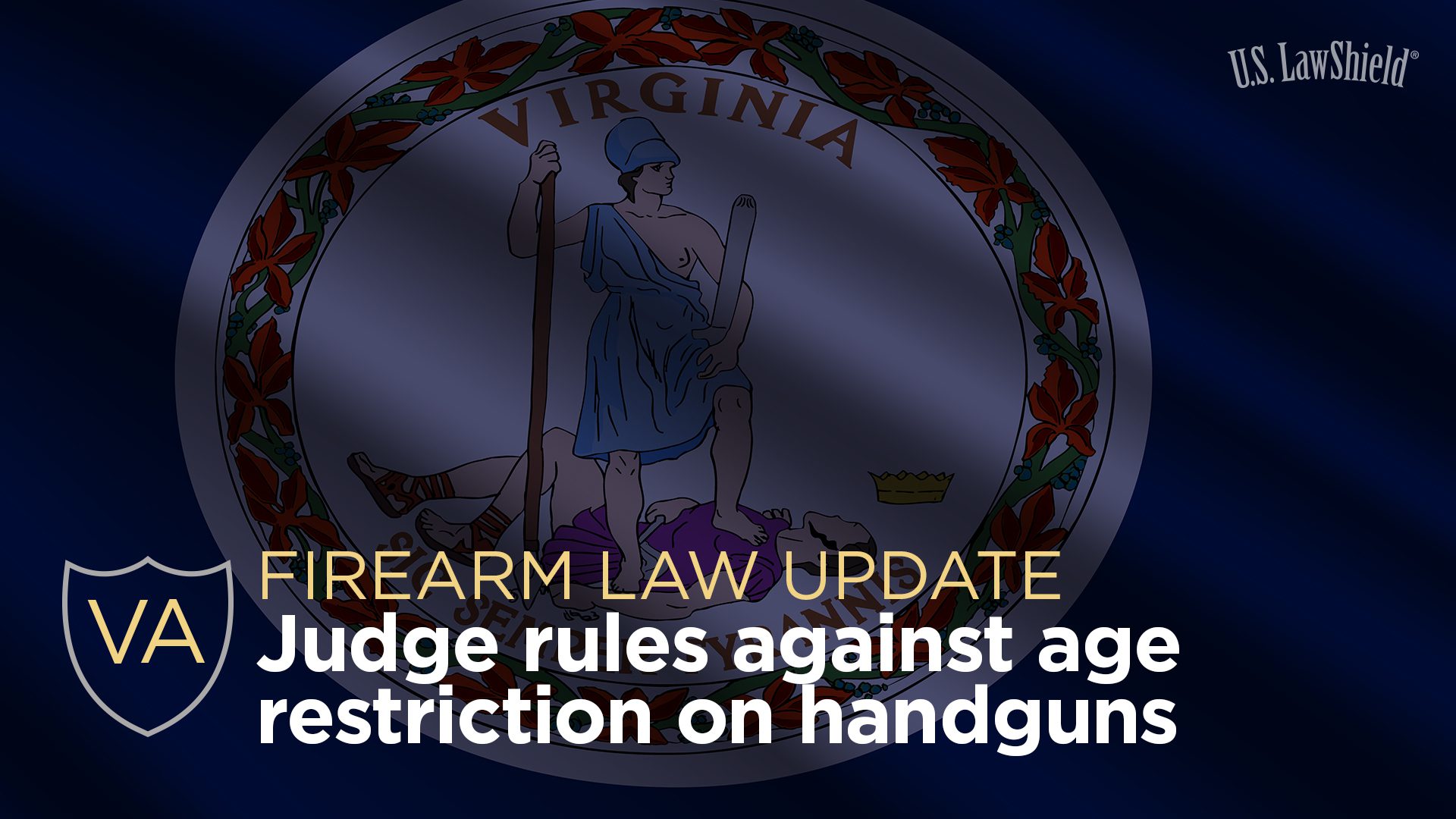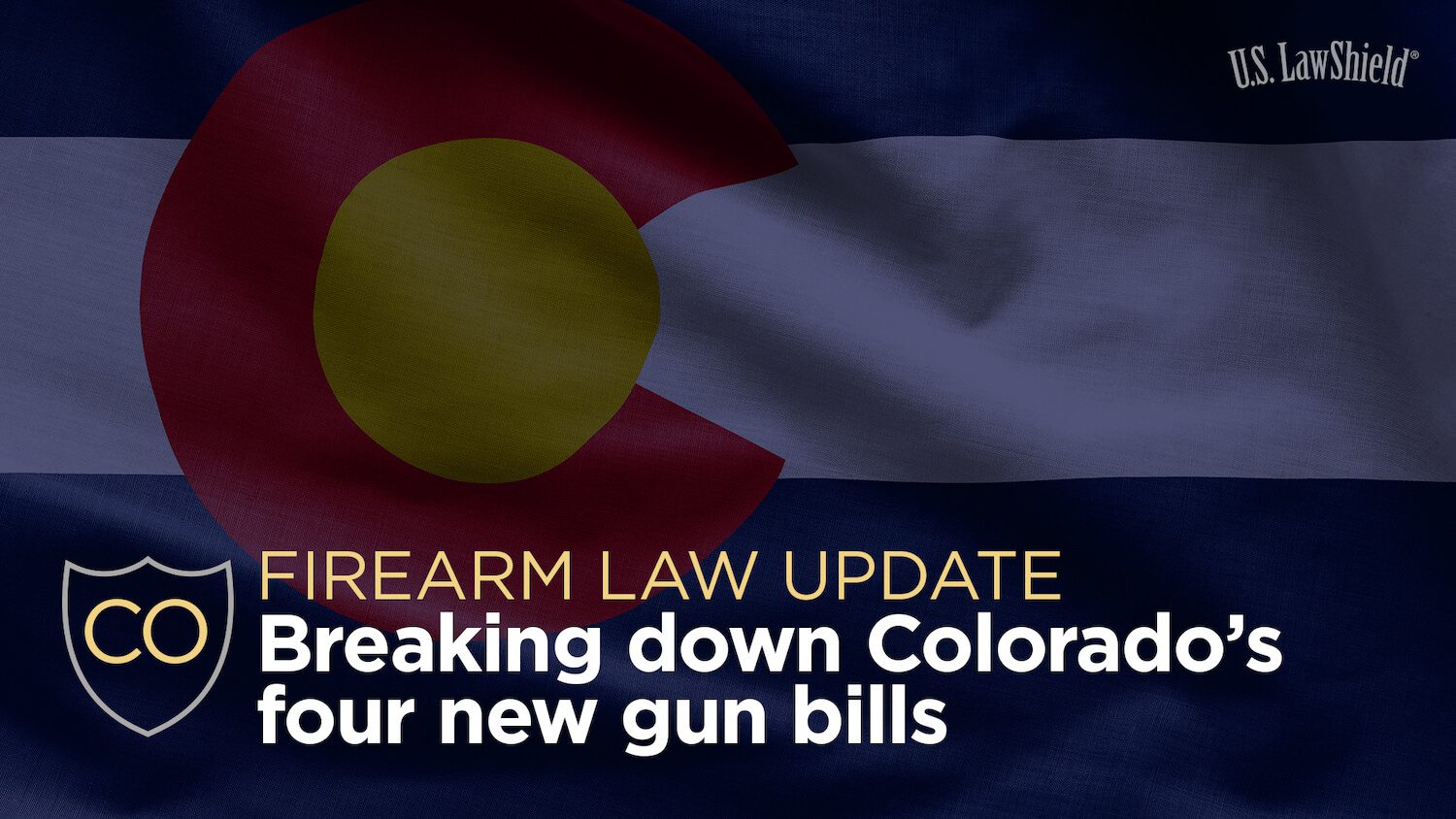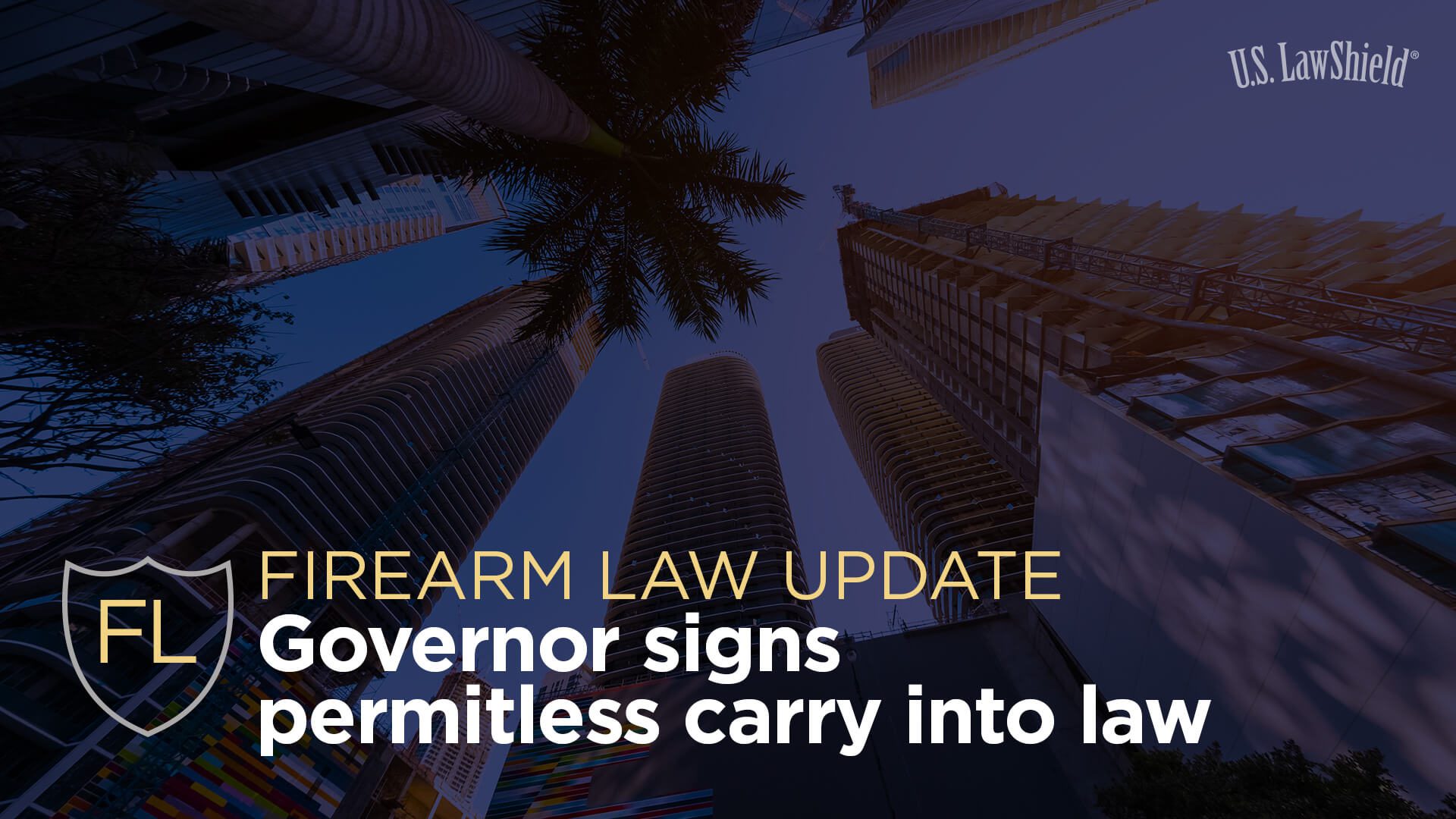By: U.S. LawShield Independent Program Attorneys Mike Giaramita & Gilbert Ambler
On January 31, 2020, the Commonwealth Court of Pennsylvania issued a preliminary injunction to prevent the Pennsylvania State Police from enforcing Pennsylvania Attorney General Joshua Shapiro’s new interpretation of partially finished firearms (80% lowers) in Pennsylvania. This means that for the time being, 80% lowers and similar partially finished frames or receivers are not going to be treated as firearms by Pennsylvania State Police. Such items will not require background checks or additional scrutiny while in an unfinished format.
Keep in mind, the court may still allow a different interpretation in the future. Below is a write up of the Pennsylvania Attorney General’s proposed new interpretation of unfinished frames and receivers in Pennsylvania, which the court just issued an injunction against, to temporarily prevent enforcement.
Quick Takeaways
Pennsylvania’s Attorney General recently re-interpreted how “firearm” is defined for many sections of Pennsylvania law. The quick takeaway is that this new interpretation mainly affects four classes of people:
- Those who wish to purchase an unfinished firearm frame or receiver in the future;
- Those who wish to sell an unfinished frame or receiver they already own;
- Federal Firearm Licensees (FFLs); and
- Those already legally prohibited from owning firearms.
If you already own an unfinished frame or receiver and have either already finished it into a completed firearm or plan on machining it into a functional firearm in the future (assuming you are legally able to possess firearms), this change in interpretation does not affect what you do with those items.
Moreover, because an 80% frame or receiver is not a firearm under federal law one could lawfully purchase them in a different state (presuming it is lawful to do so in that state) and bring them to Pennsylvania without any issue (so long as the person is not prohibited from possessing firearms under Pennsylvania law).
If you are a person prohibited from possessing firearms, this Pennsylvania Attorney General Opinion would classify you as ineligible to possess an unfinished firearm frame or receiver.
If you already own an unfinished firearm frame or receiver, and wish to sell it, you may still sell it via private sale in Pennsylvania, but you now have a legal requirement to take cautionary steps to ensure you are not selling the frame or receiver to someone who is legally prohibited from possessing firearms or ammunition.
If you are an FFL, you may no longer sell an unfinished frame or receiver without meeting the requirement to obtain an approved Pennsylvania Instant Check System approval or meet another exception in the law before transferring the item. This obviously poses some practical concerns, such as how to track these unfinished frames or receivers through things like acquisition and disposition books. But keep in mind that before the Gun Control Act of 1968 was enacted, manufacturers were not required to serialize firearms. As a result, there are already unserialized pre-1968 firearms presently on the market that are perfectly lawful to own and possess.
The reinterpretation seems designed to apply to what is known as an “80% lower” Or “80% receiver.” These terms are a legal fiction that refer to the frame or receiver of a weapon that requires additional machining to be functional. One big problem with Pennsylvania’s new interpretation is how wide a net it casts. Conceivably, any block of material large enough to be machined or shaped into a firearm frame or receiver becomes a “firearm” as soon as the state can allege there is the intent and ability to turn it into a firearm. Furthermore, it creates major conflict between federal law, which requires items to be machined to or almost to functionality before earning a designation as a firearm; and Pennsylvania law, which now entertains an argument that almost any suitable material of adequate shape could be defined as a firearm.
There are of course a multitude of serious legal questions surrounding the new interpretation of unfinished frames and receivers as firearms. The constitutional vagueness of the new interpretation is especially concerning, so it comes as no surprise that this new interpretation of the law has already been put on hold by the Commonwealth Court.
For interested readers, below is a more in-depth analysis of how the change occurred, and which code sections it expressly applies to.
Analysis
Many of us are familiar with the Attorney General of the United States, William Barr. But perhaps fewer are familiar with the Pennsylvania Attorney General, Josh Shapiro.
As law-abiding gun owners, it’s important to keep an eye on the Pennsylvania Attorney General’s activities. In certain instances, the Pennsylvania Attorney General has statutory authority to directly impact our rights. For example, it is within the scope of the Pennsylvania Attorney General’s authority to enter into reciprocity agreements with other states for our License to Carry Firearms. These agreements have tremendous bearing upon which out-of-state concealed carry licenses will be honored in Pennsylvania, and whether a Pennsylvania License to Carry Firearms will be honored in another state.
Beyond that, what he decides could have a dramatic practical impact upon whether our conduct is perceived as law-abiding or criminal. We use the term “perceived” for a specific reason. In a literal sense, the Attorney General doesn’t have the authority to “make” the law. It is the General Assembly’s job to enact legislation at the state level, and then the Governor decides whether to sign it (making it law) or decline to sign it. When the Governor declines to sign a bill into law, this is called a “veto.” But the legislature can still override the Governor’s veto with a 2/3 vote from the Senate.
So, if the Attorney General doesn’t make the law, how is there such a practical impact upon what is “perceived” as lawful versus unlawful? First, keep in mind that someone must enforce laws once they are on the books. When it comes to law enforcement agencies, it is the Pennsylvania State Police (“PSP”) who maintain jurisdiction throughout the Commonwealth.
But how do the Pennsylvania State Police interpret laws if they’re not cut and dried? After all, laws are rarely, if ever, written in such a way that they do not need some interpretation.
One-way PSP can make a call is through requesting an opinion from the Pennsylvania Attorney General. The opinion delivered by the Pennsylvania Attorney General can serve as guidance for the way PSP enforces the law in question moving forward.
Such an opinion is not the law, because only the General Assembly can enact legislation.
Another way these questions can be resolved is through a determination by the courts. Nothing settles the score quite like a good, old-fashioned court order. Sometimes, conflicting interpretations will spark a challenge in the legal system. This can happen in a criminal case (where someone is charged with a crime under the law in question, and the defense attorney argues it is being interpreted erroneously), or in a civil case through declaratory judgment or injunction.
In both of these contexts, the Pennsylvania Attorney General could be involved. Although it is somewhat rare, the Pennsylvania Attorney General does have the authority to prosecute criminal cases. So the Pennsylvania Attorney General’s interpretation regarding whether particular conduct constitutes a crime will play a role in determining whether he chooses to prosecute based upon that conduct.
Furthermore, the Pennsylvania Attorney General could potentially argue on behalf of the Commonwealth if the interpretation or validity of such laws come into question in the context of a civil case.
Recently, the Pennsylvania Attorney General caught a lot of peoples’ attention when he issued a six-page opinion to the Pennsylvania State Police interpreting whether “partially manufactured receivers” constitute a “firearm” for the purposes of the Uniform Firearms Act.
Firearms don’t magically appear out of thin air. They start out as raw materials, and then someone has to craft the material to make it a firearm. But at what point between the time that you have raw materials (suppose, a hunk of metal) until the time you have a completely finished firearm does it become a “firearm” under the law?
In recent memory, 80% receivers have become fairly popular. Basically, you can buy an unserialized “receiver” that is not finished (only 80% finished). We use the term “receiver” loosely because in the unfinished state it’s not an entirely accurate description. Because it is not finished, it cannot function as a firearm, and will only function if someone finishes machining it.
The issue is addressed directly through the Bureau of Alcohol, Tobacco, Firearms and Explosives’ website:
Are “80%” or “unfinished” receivers illegal?
Receiver blanks that do not meet the definition of a “firearm” are not subject to regulation under the Gun Control Act of 1968 (“GCA”). The ATF has long held that items such as receiver blanks, “castings,” or “machined bodies” in which the fire-control cavity area is completely solid and un-machined have not reached the “stage of manufacture” which would result in the classification of a firearm per the GCA.
But in his new opinion, Attorney General Shapiro concludes that for certain purposes, an unfinished receiver could be considered a “firearm” under Pennsylvania law.
For Pennsylvania, we have to keep in mind that the Uniform Firearms Act’s general definition of a “firearm” is very narrow. Under 18 Pa.C.S. § 6102 it includes:
Any pistol or revolver with a barrel length less than 15 inches, any shotgun with a barrel length less than 18 inches or any rifle with a barrel length less than 16 inches, or any pistol, revolver, rifle or shotgun with an overall length of less than 26 inches. The barrel length of a firearm shall be determined by measuring from the muzzle of the barrel to the face of the closed action, bolt, or cylinder, whichever is applicable.
For the purposes of discussion this would include modern pistols, short-barreled rifles (as governed by the National Firearms Act of 1934), and short-barreled shotguns (also governed by the National Firearms Act of 1934).
But there are specific provisions of the Uniform Firearms Act that utilize a different and more expansive definition of “firearm.” With that in mind, the PA Attorney General specifically limited his opinion to the definition of “firearm” under the following provisions of the Uniform Firearms Act:
18 Pa.C.S. § 6105(i), 18 Pa.C.S. § 6105.2(i), 18 Pa.C.S. § 6106(e)(1), 18 Pa.C.S. § 6107(c), 18 Pa.C.S. § 6110.2(c), 18 Pa.C.S. 6111(f)(1), 18 Pa.C.S. 6111.1(k), 18 Pa.C.S. § 6111.2(d), 18 Pa.C.S. § 6111.4, 18 Pa.C.S. § 6113(d), 18 Pa.C.S. 6117(a), 18 Pa.C.S. 6120(b), and 18 Pa.C.S. § 6128(f). We would be willing to bet nobody has committed all of these laws to memory, and that’s OK!
At the most basic level, here’s what we need to know:
In the Pennsylvania Attorney General’s opinion, his analysis was founded on the premise that these specific sections define “firearm” as “any weapon which is ‘designed to or may readily be converted to expel any projectile by the action of an explosive; or the frame or receiver of any such weapon.’”
So unlike the narrow definition of Section 6102 that serves as the general definition of “firearm” under the Uniform Firearms Act, here he’s interpreting a very broad definition of the term “firearm.”
His conclusion was that “a receiver, that is 1) ‘designed’ to expel or 2) ‘may be readily converted’ to expel a projectile by the action of an explosive, is a firearm as defined in the Applicable Sections.”
In his analysis, he reasoned that “a partially-manufactured receiver is a firearm because it is ‘designed’ to expel a projectile by the action of an explosive.” Because there is no binding case law reaching this conclusion, the Pennsylvania Attorney General instead relied upon a Pennsylvania case called Commonwealth vs. Zortman, that interpreted the definition of firearm for the purposes of sentencing enhancements. 611 Pa. 22 (2011). In that case, the Supreme Court of Pennsylvania held that a firearm includes a weapon ‘designed’ to fire a bullet. Because the Court discussed both firearms that “will” fire a bullet in addition to those that are designed to fire a bullet, the Pennsylvania Attorney General concludes that a firearm “need not be capable of firing a projectile; it needs only to be designed to do so.”
“Receivers, even those in a state of partial manufacture, are unequivocally ‘designed to . . . expel any projectile by the action of an explosive’ because they are manufactured with the necessary specifications, intended, and marketed for the purpose of firing a projectile.”
Similarly, he reasoned that “a partially manufactured receiver that ‘may readily be converted’ to expel any projectile by the action of an explosive is a firearm.”
Understand that there is no binding case law making this interpretation. If there were, the score would already be settled! Instead, the Pennsylvania Attorney General made his conclusion based on cases that are not binding.
So, let’s take a look at what provisions of the Uniform Firearms Act Attorney General Shapiro referenced, and how this opinion might affect things.
18 Pa.C.S. § 6105(i) Persons not to possess, use, manufacture, control, sell or transfer firearms
If unfinished receivers fall within the definition of “firearm” under Section 6105, that would mean those who are prohibited from possessing firearms under Pennsylvania law cannot lawfully possess unfinished receivers. If it is a “firearm” for the purposes of this statute, then the possession, use, manufacture, control, sale, or transfer is prohibited for persons not lawfully able to possess. Importantly, this means prohibited persons could be prosecuted for possessing unfinished frames or receivers based on this new interpretation. If they wish to avoid prosecution, they must ensure they do not have unfinished frames or receivers hidden away among their possessions.
18 Pa.C.S. § 6105.2(i) Relinquishment of firearms and firearm licenses by convicted persons
This section sets forth the manner of relinquishment of firearms for anyone who has become prohibited from gun ownership and possession based on a domestic violence conviction. Absent good cause and approval by the court, firearms must be relinquished within 24 hours of a conviction for a crime that involves domestic violence (as defined by statute). Firearms may be relinquished directly to law enforcement or transferred to a licensed firearms dealer for disposal. If relinquished to a law enforcement agency, the prohibited person may request one transfer to a dealer within 6 months of the relinquishment.
Under the new interpretation, unfinished frames or receivers would be subject to these relinquishment requirements and procedures.
18 Pa.C.S. § 6106(e)(1) Firearms not to be carried without a license
Under 18 Pa.C.S. § 6106, it is illegal to carry a firearm concealed or in a vehicle barring certain exceptions. “There are multiple exceptions to this general restriction, including having a License to Carry Firearms, being in your home, being in a fixed physical place of business that you own, being engaged in target shooting, and persons carrying a firearm home in a secure wrapper from the place of purchase to their home.”
This general rule applies to the narrow definition of “firearm” under the Uniform Firearms Act.
Subsection (e)(1) of this statute, however, declares that certain specific exceptions carry a broader definition of “firearm.” Under the new interpretation, these exceptions that carry the broader definition will also include an unfinished frame or receiver.
18 Pa.C.S. § 6107(c) Prohibited conduct during emergency
This section prohibits the open carry of a firearm in public, now including an unfinished frame or receiver, during an emergency declared by a state or municipal government unless that person is:
- Actively defending their life or property from peril or threat
- Licensed to carry a firearm under 18 Pa.C.S. § 6109, or otherwise exempted
Interestingly, this section prevents the confiscation of firearms, accessories (specifically designed to include scopes, bipods, etc.), and ammunition. Based on the interpretation that an unfinished frame or receiver is a firearm, such frames or receivers would also be protected from confiscation during an emergency, unless the confiscation were otherwise authorized absent the emergency.
18 Pa.C.S. § 6110.2(c) Possession of firearm with altered manufacturer’s number
This section prevents possession of a firearm if a manufacturer’s serial number “integral to the frame or receiver” has been “altered, changed, removed or obliterated.” Practically speaking, to transfer unfinished frames or receivers in the future, firearm dealers may serialize unfinished frames and receivers in order to track them and transfer them. If so, under the new interpretation it would be illegal to possess unfinished frames or receivers if the serial number has been altered, changed, removed, or obliterated.
18 Pa.C.S. 6111(f)(1) Sale or transfer of firearms
This section delineates duties before a firearm can be transferred. Subsection “B” requires licensed firearms dealers to complete the Pennsylvania Instant Check System (PICS) check before transferring a firearm to a non-licensee. Based on Shapiro’s interpretation of a “firearm,” a PICS check is now required before a licensee can transfer an unfinished frame or receiver to a non-licensee. Unfinished frames or receivers can still be disposed of via private sale without a transfer occurring through either a firearms licensee or the sheriff’s department. This section also addresses the Attorney General’s concurrent jurisdiction to investigate and prosecute crimes in any city of the first class.
Finally, this section sets forth penalties for knowingly or intentionally transferring firearms in violation of the Uniform Firearms Act. If a firearms licensee were to knowingly or intentionally transfer a firearm, including an unfinished frame or receiver, to a prohibited person, in addition to committing a felony, the licensed dealer would be subject to license revocation. A felony is also committed by any person who makes false statements (either orally, or in writing) in association with the purchase, delivery, or transfer of a firearm.
18 Pa.C.S. 6111.1(k) Duty of the Pennsylvania State Police
This section sets forth the duties of the Pennsylvania State Police to implement the Uniform Firearms Act. Much of this section is procedural and has to do with the method of background check, what information is to be collected, and the manner in which denials can be challenged. Based on the new interpretation of “firearm,” the Pennsylvania State Police would be tasked with enforcing the act with regard to unfinished frames and receivers.
18 Pa.C.S. § 6111.2(d) Firearms sale surcharge
Surprise, surprise: the government wants a piece of the action! This section provides an additional $3 surcharge for the transfer of every firearm subject to tax in the state. The additional $3 is to be deposited in the fund used for the Firearm Instant Record Check. Based on the new interpretation of “firearm,” the government now gets to collect $3 for every sale of a frame or receiver.
18 Pa.C.S. § 6111.4 Registration of Firearms
This section prohibits the government from creating a registry of firearms. Although transfer procedures are purportedly now required for the sale of even unfinished frames or receivers through a firearms licensee, in theory the government is still not allowed to create a registry of this information. The Allegheny Sportsmen League v. Rendell case largely detracts from the utility of this section (the court found that the transfer records maintained do not constitute a registry), but that is beyond the scope of this update.
18 Pa.C.S. § 6113(d) Licensing of Dealers
This section defines the manner in which dealers must sell firearms. In the past, a licensed dealer would have been permitted to sell unfinished frames and receivers anywhere that was convenient to them and the purchaser. Under the new interpretation of “firearm,” dealers are now restricted to only selling unfinished frames or receivers at the same locations (gun shows or fixed, approved places of business) and in the same manner in which they may sell more traditional firearms.
There is a discrepancy between federal law, which requires dealers of firearms to obtain a federal firearms license, but says unfinished frames and receivers are not firearms (and therefore do not require a federal license), and Pennsylvania law, which now says unfinished frames and receivers are firearms. It is currently unclear whether an individual who intended to solely deal in unfinished frames and receivers would even be granted a federal firearms license if they applied.
18 Pa.C.S. 6117(a) Altering or obliterating marks of identification
This section criminalizes changing, altering, removing, or obliterating the manufacturer’s number integral to the frame or receiver of any firearm. Should you obtain a firearm or an unfinished frame or receiver that has a serial number on it already, you cannot make changes to it!
18 Pa.C.S. 6120(b) No local government regulation of ownership, possession, transfer or transportation
This section is commonly referred to as a “preemption statute.” It prevents local governments from making laws regulating aspects of ownership, possession, transfer, and transportation of firearms that are otherwise lawful within the state. Interestingly enough, prior to this interpretation of unfinished frames or receivers as “firearms,” a local government could have created their own laws regulating the possession, ownership, transfer, and transportation of “80%” frames and receivers. Now that they have been interpreted as “firearms” in Pennsylvania, regulation of them must come from the state level.
18 Pa.C.S. § 6128(f) Abandonment of firearms, weapons or ammunition
This section addresses when firearms are deemed “abandoned” and creates the procedures by which the firearms may then be disposed of. Under the new interpretation, it would also apply to unfinished frames or receivers.
For any questions, please contact U.S. LawShield.





Not mentioned in the article are 80% pistol receivers (as I see 80% 1911 and Glock blanks at some gun shows). So I assume that if the PA AGs interpretation goes into effect that person to valid person transfers of these blanks within PA would be illegal ??
Ken, please see the following response from a Pennsylvania Independent Program Attorney:
“That is correct. Should the Attorney General’s interpretation go into effect, any item that could be made into a firearm capable of expelling a projectile through action of an explosive with sufficient time, ease, expertise, equipment, availability, expense, and feasibility could be considered a firearm even in the unfinished form. So if this were to go into effect, it would absolutely impact the otherwise lawful transfer of 80 percent handgun frames.”
I’ve read that completed 80% receivers (including handgun receivers) under federal can be sold as long as your initial intent was to not sell, an time has gone by an you no longer have interest in that receiver, is there anything in pa law that restricts this?